Junta consultiva
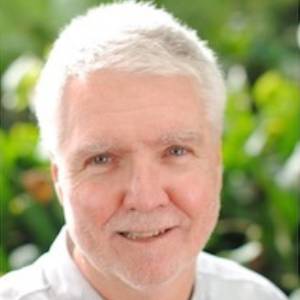
Professor Erik (Rik) Thompson
Publications: 300 peer-reviewed articles (215 primary and 85 reviews/book chapters/editorials).
Citations: 27,510 career citations (9,504 since 2015) GS
h-Index: 86 (50 since 2015)
i10 index: 236 (161 since 2015) (Google Scholar)
Erik (Rik) Thompson, PhD, is Professor of Breast Cancer Research at Queensland University of Technology (QUT) and Research Lead of QUT at the Translational Research Institute (TRI), Brisbane, Australia. He has worked in breast cancer for over 30 years, focused primarily on invasion and metastasis through studies on matrix metalloproteinases and epithelial mesenchymal plasticity (EMP), but also on mammographic density (MD) as a hereditary risk factor for breast cancer since 2000, and plasma medicine approaches since 2016. He co-founded The International EMT Association (TEMTIA, 2001) as vice-President and convened their 7th biennial meeting in Melbourne, 2015 as President (2013-2015). He also convened the international congress of the Metastasis Research Society (MRS) in Brisbane in 2012 as President (2010-2012), co-creating the OzMRS chapter of MRS in Australia. He was founding president of the AMATA (now Australian Genomic Technologies Association) and is Honorary Life Member, and served as Director for Breast Cancer Trials (previously ANZBCTG) in 2017-19. In 2010 he established the EMPathy breast cancer research network of 28 investigators across 20 institutions around Australia, targeting EMP for improved breast cancer outcomes. With funding from Australia’s Medical Research Futures Fund Rapid Applied Research Translation program, he currently leads the Centre for Personalised Analysis of Cancers (CPAC), a network of clinician-researcher partnerships across 13 tumour streams in Brisbane, to establish representative, 3D cultures of tumours towards the ultimate goal of informing treatment choices.
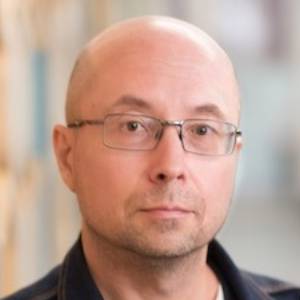
Professor Kostya (Ken) Ostrikov
Professorial appointments: > 10 countries
Plenary Keynote: > 150
Citations: > 26,000
h-Index: 78 (GS)
Prof. Ostrikov has gained worldwide recognition across the fields of plasma science, nanoscience, materials science, and related areas of plasma applications. He is an acknowledged pioneer and leader in the rapidly emerging applied research area of Plasma Nanoscience and has been fundamental to the development of the field’s large international collaborative research community. Prof Ostrikov’s fundamental insights into using plasmas to structure nanoscale matter have been applied to the development of new advanced functional materials, devices and processes, which have applications in diverse research and technological fields. His approaches for control of energy and matter at nanoscales have been translated into a range of thermal, chemical, radiation and other processes. Their likely applications span the materials, energy, health and other fields, potentially leading to energy-efficient, green technologies for a sustainable future. Of special mention are recent physical insights into plasma and plasma-made nanostructure-enabled conversion of energy and matter leading to solar-thermal water purification and microbial sterilization and other applications, discovery of ion-enabled atomic bond manipulation that turn brittle ceramic materials superplastic, and mechanisms for the open-air plasma activation of fragile molecular matter to perform as a stable catalyst for hydrogen production under industry-relevant conditions. Prof. Ostrikov’s prolific publications in top journals across about 10 discipline areas have attracted over 26,000 citations (Google Scholar, GS) and H-index of 78 (GS). He was recently awarded the very prestigious Humboldt Research Award (Humboldt Forschungspreis) in recognition of his outstanding career achievements in research and teaching and also was elected as an Academician (Foreign Member) of the very prestigious Academia Europaea (The Academy of Europe) and European Academy of Sciences which collectively include more than 115 Nobel Laureate members. His preeminent international standing and impact beyond his primary field are further evidenced by over 150 plenary, keynote and other invited talks, multiple prestigious awards, honours, fellowships and professorial appointments in over 10 countries.

Dr Carlos Orozco Bsc, MSc, ND, PhD, MD, Dr Sc, FPAMS. (RIP 10-7-1958 to 6-9-2024)
Dr Carlos Orozco is a scientist, author, speaker and lecturer whose diverse scientific career includes professional training in Biochemistry, Immunology, Biophysics, Epigenetics, Reproductive Medicine, Reproductive Biology, Orthomolecular Medicine, Traditional Chinese Medicine, Integrative Medicine, Quantum Physics, and Quantum Biology.
He holds a Bachelor of Science Degree in Experimental Biology, majoring in Biochemistry and Biophysics. He holds a Masters Degree in Immunology, and a PhD in Biochemistry and Immunology, with 5 years as a Postdoctoral Fellow. He specialised in Reproductive Medicine, and Reproductive Biology, Gynaecological Oncology, Clinical Nutrition, and Traditional Chinese Medicine. He is the International Vice President for South America’s ‘The World Association for Excellence in Health’ (AMES Mundial), he operates from Australia.
Internationally recognised for the invention of the Key to Coherence, an energy transducer which unlocks the flow of information within a quantum morphic field which results from quantum entanglement by means of resonance and vibrational waves which are closely related to gravitational waves. Inspired through a dream on equations, like many famous scientists in history have experienced, such as Nikola Tesla, Albert Einstein and Max Planck among others, the Key to Coherence is able to unleash the endemic power of love combined with the integration of energy through quantum transduction. Dr Orozco’s deep understanding of quantum mechanics, resonance and vibration means humanity can now experience the relationship between the world we see and the four drivers of unseen quantum morphic energy fields. These four quantum fields he has identified are:
1) Intention
2) Purpose
3) Significance, then when combined, induce the expression of the fourth driver:
4) Congruency
Congruency induces the process of ‘how’ everything occurs in our earthly dimension between all human beings and living organisms in the quantum morphic field that is found throughout nature, in both the micro and the macro cosmos. The most important element of this interaction is Love. Dr Carlos has mathematically, geometrically and diagrammatically shown how these invisible forces flow around us so that we can live in harmony with the world surrounding us. Following on from his published book, ‘Coherence’, it is this profound understanding of quantum physics that has influenced him to write a second book, currently in the process of its manifestation, called ‘Congruency; the light that shines within’.
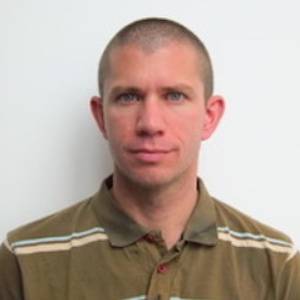
Dr Endre J. Szili
Published papers: > 60 peer reviewed
h-Index: 24
I am a Senior Research Fellow and head of the plasma medicine research group at the Future Industries Institute within University of South Australia. We are investigating the development of low-temperature atmospheric-pressure ionised gas discharge (plasma) technology as a new medical therapy for treatment of chronic wound infections, wound healing, viral infections and cancers. In addition we are applying plasma technology in agriculture, environmental applications and for improving animal welfare. Our plasma technology is underpinned by a detailed fundamental scientific understanding of the physicochemical processes within plasma environments that enables us to tailor the technology to suit each individual application. A major outcome from my research was the invention of a “plasma activated hydrogel therapy” technology, which enables safe and effective plasma treatment of wounds (Patent # WO 2015/123720 A1). In 2019-2020, I took a 12-month hiatus from academia to undertake a secondment with UK’s NHS leading disinfection wipe provider, GAMA Healthcare, in the UK. With GAMA, I progressed plasma technology for healthcare and gained experience in the commercialisation of advanced medical technologies. Upon invitation, I have taken on editorial duties for four major journals. I am Associate Editor for the Institute of Electrical and Electronics Engineers (IEEE) Transactions in Radiation and Plasma Medical Sciences (IEEE TRPMS) journal since 2016. I am a Board Member on two journals run by the Institute of Physics (IOP): Journal of Physics Communications since 2017 and Journal of Physics D: Applied Physics since 2018. I am Associate Editor for Frontiers in Physics since 2020. I am a keen home beer brewer, fisherman and conservationist, and I enjoy spending time on my hobby farm with my family and friendly flock of chickens.

Assoc Professor Christian Langton
Publications: 3,500
Citations: 6,348
h-Index: 39
Professor Langton developed the technique of broadband ultrasonic attenuation (BUA) for the assessment of osteoporosis, being awarded a DSc in 2007 for his extensive research contributions to the science, technology and clinical utility. He has over 3500 publication citations with a current h-index of 29. BUA was recognised in 2006 (EurekaUK) by Universities UK as one of the top “100 discoveries and developments in UK Universities that have changed the world” over the past 50 years, covering the whole spectrum from the arts and humanities to science and technology. In 2008, the UK’s Department of Health also recognised Professor Langton’s contributions in a publication highlighting eleven projects that have contributed to ‘60 years of NHS research benefiting patients’. Professor Langton previously served as Sub-Dean for Research and Reach-Out within University of Hull’s Postgraduate Medical Institute, and Director of R&D Performance within Hull & East Yorkshire Hospitals NHS Trust. He was appointed Professor of Medical Physics at Queensland University of Technology (QUT) in February 2008 and Head of Physics in 2010. In January 2012 he was appointed Assistant Dean (Research) for the new Science & Engineering Faculty (SEF). He delivered the 2013 Queensland Youth Physics Lecture Tour titled ‘This is QUIC!’; covering 6,000km and over 20 schools, the presentations concluded with ‘Langton’s Philosophies’ of grasping fortuitous opportunities, being your best and enjoying what you do.

Professor Hossein Javadi
Publications: 190
Reads: 581,558
Citations: 186
h-Index: 8
Professor Hossein is an Independent Theoretical Physics Researcher and Mathematician. He is the holder of a prestigious invitation for Professorship from the Islamic Azad University since 1988. At the age of 12 he had become familiar with Newton’s laws but one year later by 1962 he questioned their validity which initiated the beginning his career in physics. He could not accept infinitive speed and questioned the laws of gravity and time, leading to doubts about the infinite Mass – Energy theory. Seeking answers as to why light has stable speed, he proposed the CPH Theory after a further 26 years of research, by 1987. Ultimately he has scrutinized the interface between relativity and quantum mechanics through a novel approach to the established physical events. The CPH Theory a product of his life’s work, is based on Generalized light velocity from energy into mass. It seeks to answer the questions: 1. Does light speed originate from a natural event? 2. With the creation of decay from electron-positron pair why do the related photons move at a constant speed, when we can change the speed of matter and antimatter? 3. What is the unique characteristic of matter which is convertible to photons that move with constant speed (being the speed of light)?
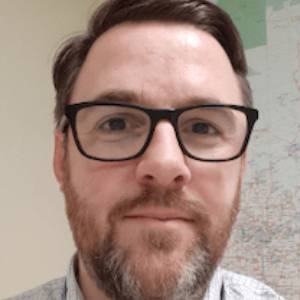
Assoc Professor Mathew Diggle
Publications: 110
Reads: 7,773
Citations: 1,673
h-Index: 35.09
Dr Mathew Diggle PhD, MSc, DLSH&TM, FRCPath (UK), SRCS has held various Clinical Microbiology positions within acute diagnostic and reference services in the UK and Canada since 2000. Previously worked in Glasgow, London & the East Midlands, spending time focused on rapid/molecular diagnosis of infections (respiratory and those involved in deliberate release) and understanding complex infections. Over the past several decades has also supported clinical research within Microbiology and Infectious Diseases with various honorary positions held at International Universities, supporting a range of MSc, BMedSci and PhD (both clinical and non-clinical) activities. In addition has also supported the National Institute for Health Research (NIHR) East Midlands as Clinical Lead for Infectious Diseases and within this specialty held the national lead role for diagnostics. Senior Leadership roles include the National Pathology Board (NHSi) with responsibility for delivery of pathology transformation within England. Clinical expertise and interests include, complex respiratory infections, Gastrointestinal infections and Diabetic foot infections (current author of the international guidelines). Currently an Associate Professor, Consultant Clinical Microbiologist and Program Leader with Alberta Health Services (ALS) based in Edmonton, Alberta, Canada and Editor for the Journal of Medical Microbiology.
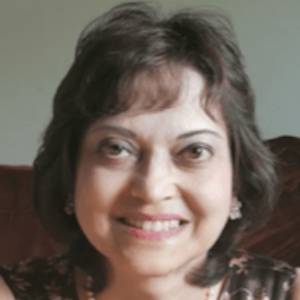
M. Nisa Khan is the author of, “Understanding LED Illumination” (CRC Press, 2013) – a widely used university textbook around the world in the field of laser and LED engineering and solid-state lighting. She received the B.A. in physics and mathematics from Macalester College in 1986 and the M.S. and Ph.D. degrees in electrical engineering from the University of Minnesota, Minneapolis, in 1988 and 1992 respectively. During her studies, she worked as a research associate for 9 years at Honeywell Solid State Research Center in Bloomington, Minnesota. After completing her doctorate, she became a member of the technical staff at AT&T Bell Laboratories (now Nokia Bell Labs) in Holmdel, New Jersey, and spent most of her 6 years at the Photonics Research Laboratory at Bell Labs-Crawford Hill conducting pioneering work on 40-Gb/s optoelectronic and integrated photonic devices. Dr. Khan then worked on optical communication subsystems at several other companies, including her own venture-backed companies in New Jersey. In 2006, she started an independent research and engineering company, IEM LED Lighting Technologies, and has since been involved in innovation and technology development for making solid-state lighting more suitable for general lighting. She has written over 40 peer-reviewed research articles in IEEE, OSA, and AIP journals, presented numerous invited and contributed papers at OSA, IEEE, and APS conferences, notable international conferences in Europe and China, and has 10 U.S. granted patents as either first or sole author. Dr. Khan performed many feasibility field studies for LED display and signage industries and wrote over 50 LED column articles from 2007 to 2016 in Signs of the Times magazine, which has been serving the electric sign illumination industry since 1906. Dr. Khan’s original scientific contributions can be found in ResearchGate.net that highlight her discovery of why semiconductor lasers, LEDs, and RF antennas produce directional beams and she is the first to derive the closed-form, analytic equation for near-field electromagnetic radiation distribution from finite, flat radiation sources. This derivation along with the theory of Fourier Optics prove that LEDs, lasers, and flat RF antennas and their arrays are NOT point radiation sources no matter how far the observer is from a flat radiation source. This discovery is very notable and she explains with her new theory why high- power and high-brightness LED-based lamps – used for example as car headlamps – have tremendous glare that propagate directly into viewers’ eyes when their field of view substantially overlaps with the center optical axes of the headlight beams. Her discoveries have been validated by experiments and finite simulations many times over and stand as the only work that can help the auto headlamp industry upgrade their photometric standards for non-point sources that produce non-uniform luminance and radiance – and adopt appropriate measurement techniques that would disqualify all current LED headlamps for having too great a luminous intensity along the optical axes of both high and low beams. Similarly, her work suggests that current 4G and 5G wireless signals generate dangerous levels of electromagnetic radiation for cell phone users and for residents who live nearby antenna base stations.
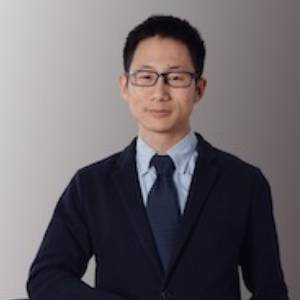
Assoc Professor Yubin Xian
Publications 63
Reads 11,000
Citations 1,700
Associate Professor Yubin Xian currently works at the State Key Laboratory of Advanced Electromagnetic Engineering and Technology, Huazhong University of Science and Technology Wuhan PRC. Yubin does research in Plasma Physics, Plasma Medicine, Polymer Chemistry and Materials Chemistry. Their most recent publication is ‘Radial constraints and the polarity mechanism of plasma plume’. Yubin created a specially designed lab to run some measurements, including such things as spatio-temporal distribution of NO2 and he also captured some images of the Cold Air Plasma Plume from the Bionic Air MkII medical device.
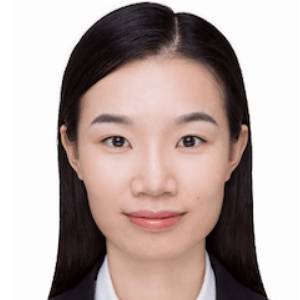
Dr Peiyu Wang
Publications: 17
Reads 355
Citations: 178
h-Index: 7
Peiyu Wang is an early career researcher. She completed a Bachelor of Science majoring in Pharmacy and went on to complete her Master of Science majoring in Biochemistry before joining The Institute of Health and Biomedical Innovation (IHBI) @ Translational Research Institute (TRI), School of Biomedical Sciences, Queensland University of Technology, Australia. She has won 10 awards for her advanced skills in research and publications since 2010. Her main research direction is the application of cold atmosphere plasma (CAP) in the field of biomedicine. CAP is the fourth state of matter. It has been found to have outstanding effects in anti-virus, anti-bacteria, cancer treatment and wound healing. Based on biochemistry and cell biology, she studied the potential molecular mechanism and optimized the treatment strategy for clinical application. During the COVID-19 epidemic, her project was supported by the Australian government and found that plasma pre-treated host cells could prevent from virus entry. Currently, her project is on impact of CAP on the immune system. She is the winner of QUT Postgraduate Research Award (QUTPRA). She expects that the application of plasma can pave a new avenue for solving medical problems.
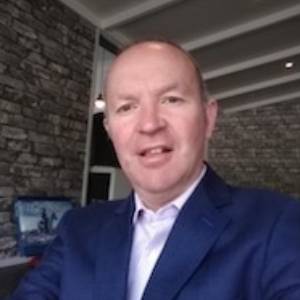
Dr Keryn Johnson
Journal articles & reports 100+
Books & Chapters 2
Conferences 7
Patents 6
Dr Johnson has a PhD in Biochemistry, Masters in Molecular Genetics and a BSc double major in Plant and Microbial Sciences and Biochemistry. Dr Johnson’s research career has consisted of developing regenerative medicine technologies including an extracellular matrix from sheep’s stomach for Aroa Biosurgery and a number of wound healing technologies including GAP junction modulating peptides, N-acyl ethanolamine pain reducing wound healing therapies, Manuka honey based wound healing technologies, organogels and a revolutionary sunscreen (Active High Performance Sunscreen).
Dr Johnson has spent 18 years as a research scientist and worked with over 50 companies and has over 100 scientific outputs. Dr Johnson has recently developed a new model in physics that is an extension of Einstein’s E= mc^2 through the application of light based geometry by rearranging Einstein’s equation to c^2=E/M and placing this onto a mathematical cross to identify a ‘SUSY’ (Supersymmetry) inversion model that enables the identification of dark matter and dark energy and creates a model in physics that includes positrons to restore geometric symmetry and generate a logical approach to non-measured understanding of the universe at the Planck scale (without time) and geometry of light (no mass and no charge) as a technology platform for quantum biology. With this new quantum biology model Dr Johnson is developing novel solutions to unmet medical needs using his expertise in quantum biology.
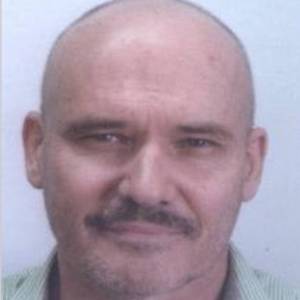
Dr Mark Edwards
Publications 13
Conferences 9
Dr Mark Edwards is the Managing Director of Asia Pacific Cell Technology. He has over 10 years technical and publishing experience in cell biology and genetics research across human, animal and plant species. Post graduate, Biomedical Research projects at the Molecular Neurobiology Laboratory at Murdoch University (Western Australia) included the analysis of genetic expression, location and functional characteristics of NMDA neurotransmitter receptors in the brain stem which involved extensive cell culture, induction of neuronal phenotypes and electrophysiology (whole cell patch-clamp) techniques. PhD research at the BRI North Ryde Sydney and Southern Cross University (SCU), NSW, Australia. concerned the analysis of genetic (Single Nucleotide Polymorphisms), protein expression, and endosperm morphological characteristics influencing cereal grain processing efficiencies. Following several journal publications, Mark provided key technical and bioinformatics support and management of operations at the DNA sequencing facility at SCU. Mark held a postdoctoral fellowship role at the Max Planck Institute of Immunobiology and Epigenetics in Freiburg (Germany) involving the coordination, culturing and processing of human cell lines and clinical samples for Chromatin Immuno-precipitation Sequencing (ChIP-seq) within the German epigenome programme which explored epigenetic influences on complex metabolic and inflammatory diseases. Since 2014, his company has provided technical support, regulatory affairs and general medical writing services to a range of small biotech companies involved in alternative therapeutics and medical devices. These contracts have involved diverse fields including stem cell treatments, clinical trials, anti-inflammatory products and plasma medicine devices. Mark has been a support to Bionic Air since 2017.

Albert Wong AM
Albert Yue-Ling Wong AM currently serves as a Director of Scimita Ventures and Boomerang Capital. Albert has an accomplished career as a stockbroker and investment banking professional with Merrill Lynch, Intersuisse Limited (principal 1990-1995) and the Barton Capital group of companies (founder and principal 1995-2002) and philanthropist in a career spanning more than 40 years across Australia, South East Asia, Europe and the USA. Well recognised for his ability to guide strategy, corporate advisory, IPOs, political networks, identify and negotiate with high profile investors. He was in business with former Premier of NSW, the Hon. Neville Wran AC QC in a private investment partnership (2004-2011). In 2016, he lead the 20% equity acquisition ($440 million) of Virgin Australia from Air New Zealand on behalf of China’s Nanshan Group. He was the inaugural Chairman and co-founded a global regulatory technology business Kyckr which listed on ASX in September 2016. In recognition for his contribution to Australia since residency in 1975 from Hong Kong, he was awarded the Member of the Order of Australia (AM) for services to Community, Medical Research, Tertiary Education and the Visual Arts in January 2017. His focus today is on futuristic innovative companies who need growth and solid networks to achieve sustainable benefits for humanity whilst providing a strong return to vested stakeholders. Albert is a board member of UNSW Foundation, Director of the Children’s Medical Research Institute, Director of the GWS Giants Foundation and Honorary Life Governor and former President (2013-2016) of the Physics Foundation at the University of Sydney. In April 2020, His Excellency General the Honourable David Hurley AC DSC (Ret’d), Governor General of the Commonwealth of Australia launched The Forgotten (the story of the Chinese Labour Corp and the Chinese ANZACs). This book was commissioned by Albert and co-written with Australian historian Dr Will Davies. In March 2021, Albert was made a Fellow or the Royal Society of NSW.

Russell Brown OBE
(For our China & HK office)
Mr. Russell Brown OBE is Founder and Managing Partner of LehmanBrown International Accountants, a China-focused accounting, taxation and business advisory firm with operations in Beijing, Hong Kong and five other offices across China employing around 200 professionals.
Russell has over 34 years working experience including 26 years living in China. Prior to founding LehmanBrown Russell was Global CFO of one of the world’s largest public relations and communications consulting companies and prior to this their Asia Pacific Regional CFO.
Russell gained a BA (Hons) in Business Studies from Bournemouth University, is a Fellow of the Chartered Institute of Management Accountants (CIMA) in the UK and a Fellow of the Institute of Chartered Accountants of England and Wales. He is also a Certified Global Management Accountant.
He is currently Treasurer of the Australian Chamber of Commerce in China and also the British Chamber of Commerce in China. He has previously held various positions including Chair, Vice Chair, and Treasurer of the British Chamber of Commerce in China, Vice Chair of the China-Britain Business Council (CBBC), Chair and Director of the Asia Transformation and Turnaround Association. He is also an Honorary Member of The 48 Group Club.
Russell was awarded an OBE (Officer of the Order of the British Empire) for services to British Business and the British Community in China in Queen’s Birthday Honours in June 2015.
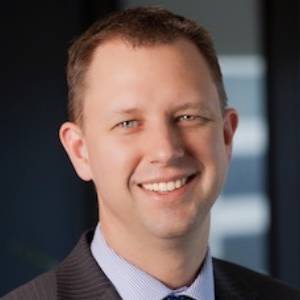
Cameron Gascoyne
(Brisbane, Australia)
Cameron is a commercial law partner at national law firm Clayton Utz, specialising in intellectual property law and related business transactions. Cameron has substantial experience advising on the protection, commercialisation and enforcement of intellectual property. He advises clients on arrangements for licensing core business technology. He also advises on strategic alliances, joint ventures and other commercial arrangements for collaborative research and development projects. His background in Science and Law, and an MBA in Technology Management has equipped him with a strong technical understanding and commercial approach.
